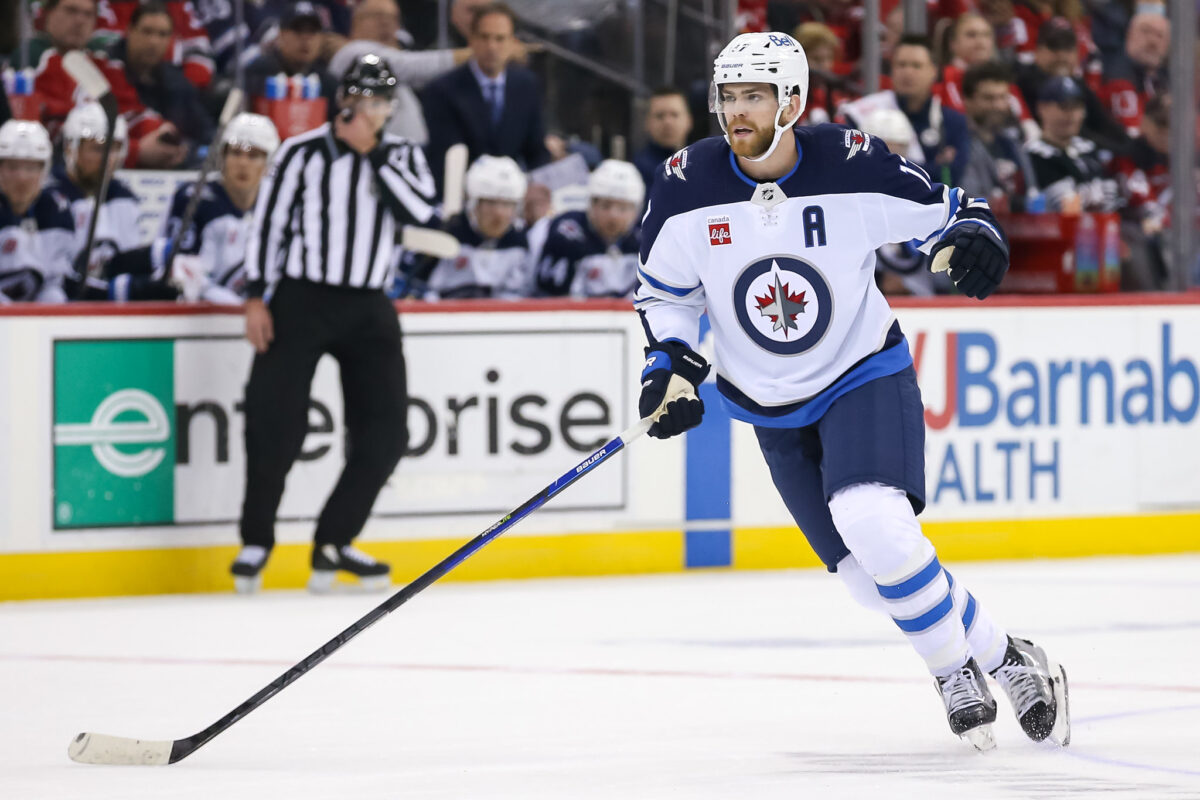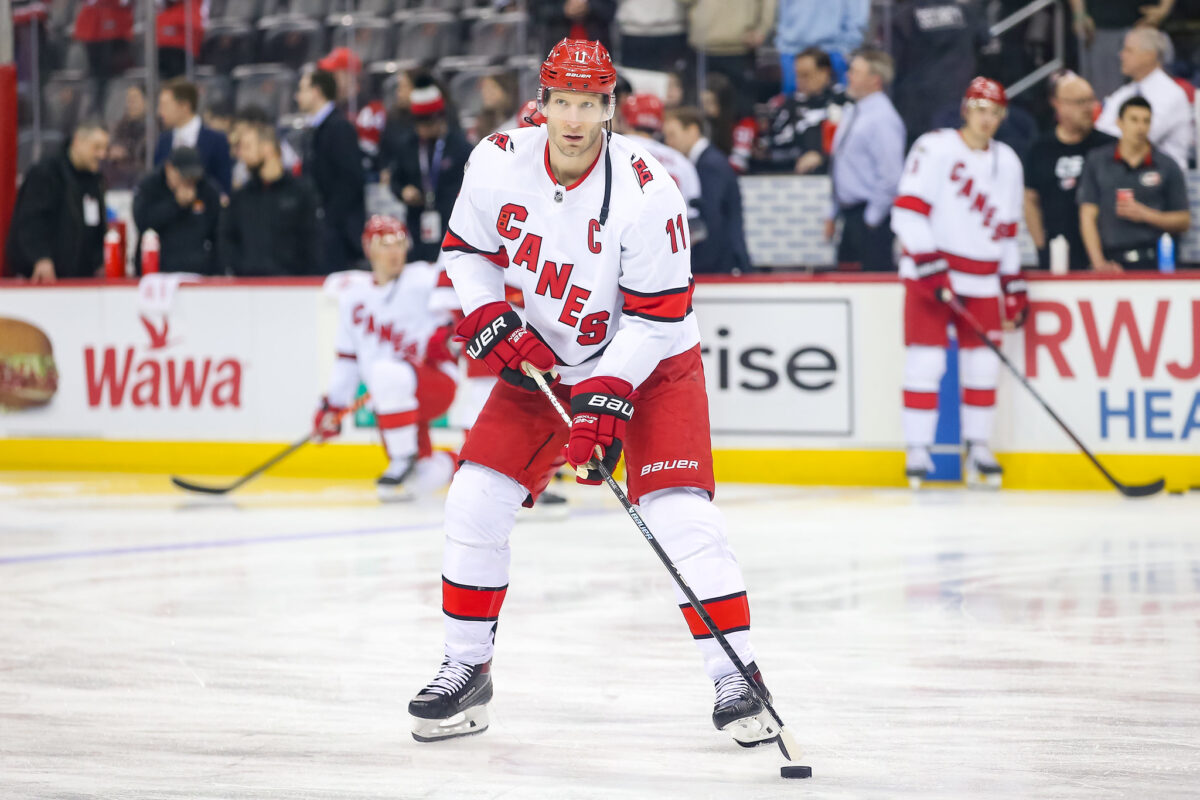The Winnipeg Jets enter the 2023-24 season with something to prove having consistently boasted a potent offensive attack led by their top-six forwards. While they are usually known for their offensively talented top-six, this past season showed everyone that depth in the bottom-six is what propelled the Vegas Golden Knights to a Stanley Cup championship. In this article, I’m going to dissect the Jets’ bottom-six and compare it to the other premier bottom-sixes in the NHL. For reference, I think they currently possess the sixth-best in the NHL.
I foresee the Jets rolling a top-six in no order of Mark Scheifele, Kyle Connor, Nikolaj Ehlers, Gabriel Vilardi, Cole Perfetti and Vladislav Namestnikov. This leaves the bottom-six consisting of a third line of Nino Niederreiter, Adam Lowry and Alex Iafallo and a fourth line of Morgan Barron, Rasmus Kupari and Mason Appleton. Niederreiter and Iafallo represent legitimate top-six upside that gives Lowry the best linemates he’s had in his entire career; while a solid but not spectacular fourth line gives Winnipeg the opportunity to roll four lines all season.

Despite facing stiff competition from teams like the Calgary Flames, Dallas Stars, Carolina Hurricanes, Los Angeles (LA) Kings, Seattle Kraken, and Golden Knights, the Jets’ bottom-six has the qualities to make up a crucial element of the team’s overall performance. (Note: All projected lines used in this article are courtesy of Daily Faceoff)
Calgary Flames
Third Line: Andrew Mangiapane – Mikael Backlund – Blake Coleman
Fourth Line: Jakob Pelletier – Adam Ruzicka – Walker Duehr
The Flames have a solid bottom-six forward group that is mixed with both veterans and young forwards. There is a genuine argument that could be made that the Flames have the best third line in all of hockey. The trio of Mangiapane, Backlund and Coleman could easily be the second line on more than a handful of NHL teams. The fourth line is solid but is dependent on younger and inconsistent players taking the next step and becoming full-time contributing NHLers. With a little more puck luck and no mass player exodus, the bottom-six could be one of the key contributors that bring the Flames back to the playoffs in 2023-24.
Related: Jets Stuck in Mushy Middle of Wild Card Contention
I have to give Calgary the edge over Winnipeg due to the fact Backlund was amazing last season and could easily be a shutdown second-line center on a legit Stanley Cup contender. Furthermore, while the fourth lines are pretty equal on paper to start the season, the Flames’ has more potential to grow as the season progresses.
Carolina Hurricanes
Third Line: Jordan Martinook – Jordan Staal – Jesper Fast
Fourth Line: Teuvo Terravainen – Jack Drury – Stefan Noesen
The Carolina Hurricanes are best known for their high-paced and skilled style of play. Their bottom-six unit is no different. Players like Martinook, Staal and Fast bring energy, scoring and defensive ability to the Hurricanes’ bottom lines. Their fourth line on paper is one of the best in the league as well. Terravainen is a top-six forward with consistency issues while Drury could easily be a third-line center. Noesen rounds out the group with the ability to play with grit on any line as he was on the top line for the Hurricanes’ 2023 Playoff run.

The Hurricanes definitely possess a better bottom-six than Winnipeg. Both units are exceptionally good but the Hurricanes have the ability to plug and play anyone in their bottom-six and have the same successful results. Anyone who is plugged in plays a suffocating defensive style of play mixed with an elite combination of forechecking. Carolina has one of the best forward cores in the entire league as a result.
Dallas Stars
Third Line: Mason Marchment – Tyler Seguin – Matt Duchene
Fourth Line: Ty Dellandrea – Radek Faksa – Craig Smith
The Dallas Stars have an elite young core of superstars filled with older veterans from past cores which enables them to acquire elite talent while pursuing a championship. This is how they acquired Duchene, who would be a first-liner on at least 20 teams. Marchment and Seguin are highly overpaid middle-six forwards, but if you can fit them in on your third line, your forward core must be stacked. The fourth line is solid with Dellandrea blossoming into a pest, Faksa being a solid shutdown player and Smith being an above-average shot creator.

It’s scary that the Stars are in the Central Division because their bottom six is slightly better than Winnipeg’s in my opinion (along with almost the rest of their team). This is because they have a player who can score 40 goals in Duchene. There is definitely a pathway for Winnipeg’s to better though, as if Marchment and Seguin continue to struggle, so will the rest of Dallas’ bottom-six.
Los Angeles Kings
Third Line: Trevor Moore – Philip Danault – Viktor Arvidsson
Fourth Line: Carl Grundstrom – Blake Lizotte – Trevor Lewis
I just had to include the Kings in this article, as with their abundance of center depth, one of Pierre-Luc Dubois or Danault will be on the third line. Danault is a premier two-way center and Arvidsson could easily score 60 points this season. Moore closes out the third line being a solid middle-six utility player. However, similarly to Calgary, their fourth line is very pedestrian. For this reason, I think it’s a genuine 50/50 tossup in deciding if the Jets’ bottom-six is better.
Seattle Kraken
Third Line: Eeli Tolvanen – Yanni Gourde – Oliver Bjorkstrand
Fourth Line: Brandon Tanev – Pierre-Edouard Bellemare – Kailer Yamamoto
The Seattle Kraken lack the star power of nearly every other team in the league. However, they make up for it with the best bottom-six. Players like Tolvanen, Gourde and Bjorkstrand all have second-line potential, while Tanev and Yamamoto are competent third-liners. The Kraken will require another lights-out run from their bottom-six to make the playoffs and they definitely have the depth to do so. The Jets have a very good bottom-six but the Kraken’s is the class of the league.
Vegas Golden Knights
Third Line: Paul Cotter – William Karlsson – Mike Amadio
Fourth Line: Will Carrier – Nicolas Roy – Keegan Kolesar
The Vegas Golden Knights have been a top-tier team since their creation and their forward depth is a key factor. Their entire bottom-six is solid and led by middle-six centerman, Karlsson. I felt obligated to include them in this article due to their Stanley Cup championship, but truthfully I think their bottom-six is not nearly as good as last season and I actually think the Jets’ bottom-six is better.
Deep Bottom-Six Gives the Jets an Edge This Season
The Jets have a mediocre, but competitive roster which is filled out with a solid group of forwards. They face stiff competition from several teams in the league in this regard including the ones mentioned above. The Jets will need to continue developing their depth and find ways to match up effectively against the teams they play. If the bottom-six is as good as advertised, there is a very good chance Winnipeg has a better forward core than last season, which could be the difference between making and not making the playoffs. If they plan on re-signing Mark Scheifele and Connor Hellebuyck, having a near league-best bottom-six and making the playoffs because of it will go a long way in potentially making that happen.
